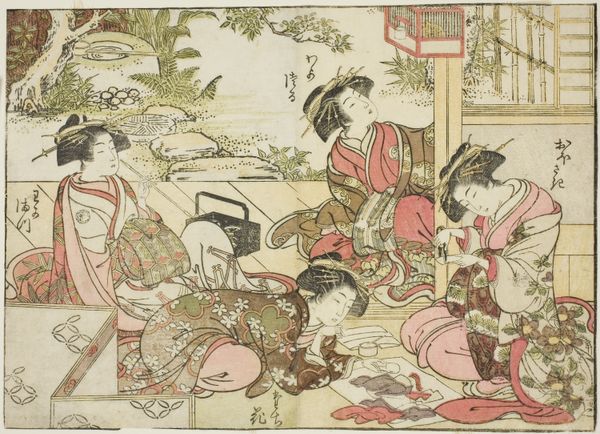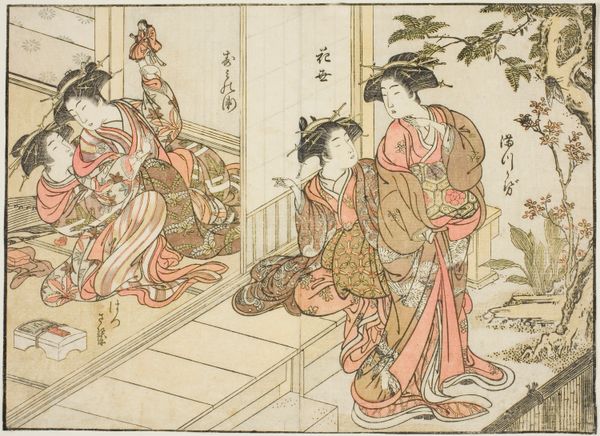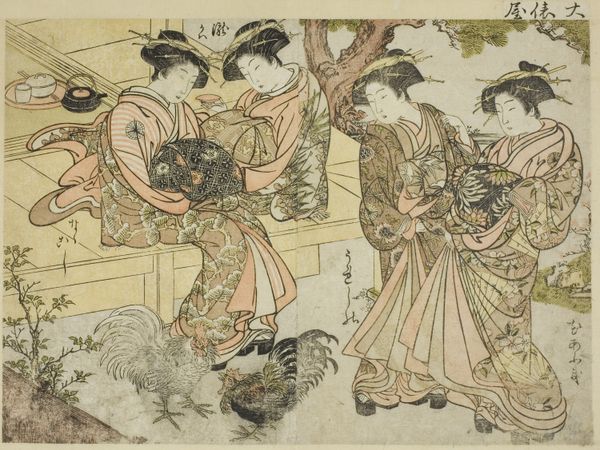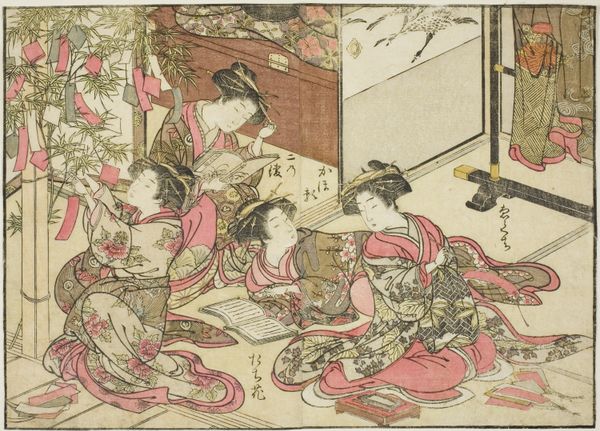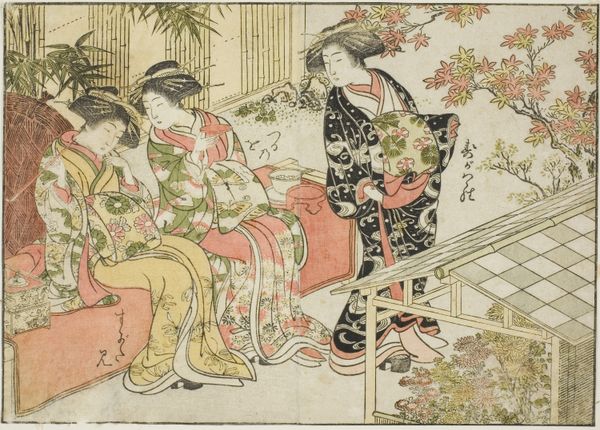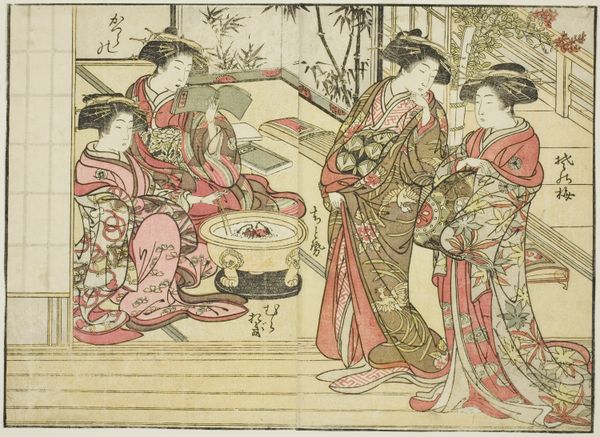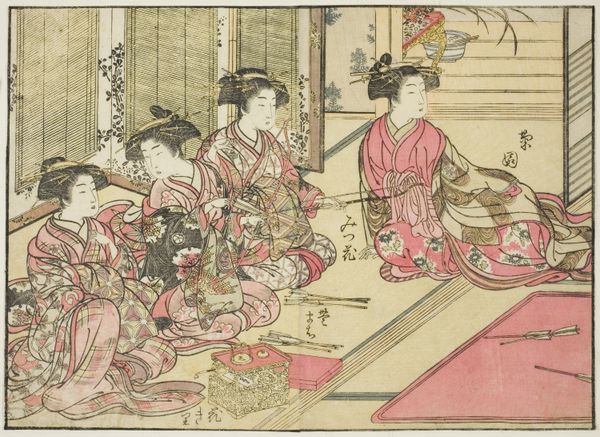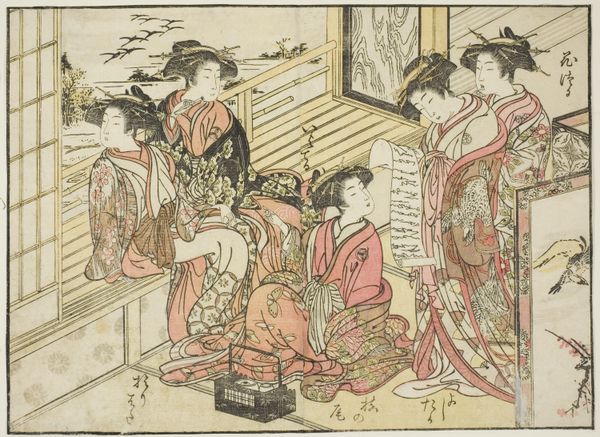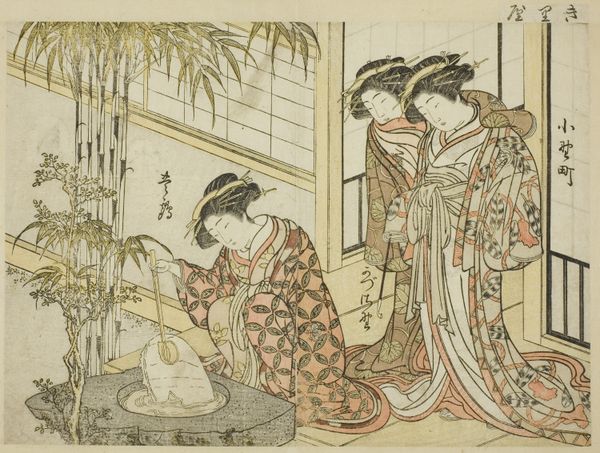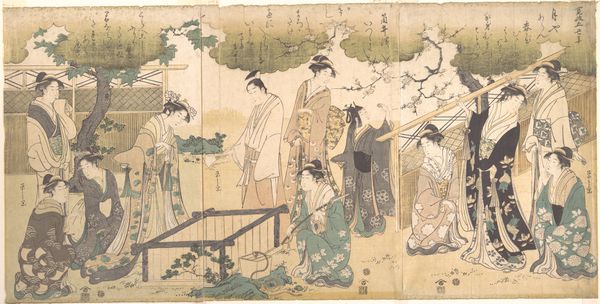
Courtesans of Oebuji, from the book "Mirror of Beautiful Women of the Pleasure Quarters (Seiro bijin awase sugata kagami)," vol. 2 1776
0:00
0:00
print, paper
# print
#
asian-art
#
ukiyo-e
#
figuration
#
paper
#
genre-painting
Dimensions: 8 7/8 × 11 7/8 in.
Copyright: Public Domain
Editor: So, this is "Courtesans of Oebuji," a print from 1776 by Kitao Shigemasa. The figures are delicately rendered in muted colors. It's fascinating to see these women, presumably sex workers, in what seems to be a moment of quiet domesticity. How would you interpret this work? Curator: What interests me most are the tangible aspects of this print. Look at the paper, the woodblock carving, the registration of colors – these are products of intense labor. And beyond that, consider the societal structures at play. The "floating world" of the pleasure quarters, or ukiyo, was built upon very specific systems of labor, consumption, and class. This print isn't just a depiction, it's a commodity within that system. It provides a service: idealized, fetishized beauty sold to male clientele. The actual production, not just its context, is of importance. Does this alter your perception? Editor: It does! Focusing on the material reality shifts my understanding. I was initially drawn to the scene's intimacy, but your point about the print as a commodity makes me consider its function as a kind of aspirational advertisement as well. How was the printmaking process itself regarded? Was it seen as 'art' or more as skilled craftsmanship? Curator: That's exactly the question to be asking! Ukiyo-e often blurs those very boundaries. We have an artist, Shigemasa, who designs the image, but then skilled artisans execute the wood carving and printing. Consider them, too, as participants. The division of labor reflects a social hierarchy within the art production itself. So, the print's material form provides key insights. Editor: That's incredibly insightful. By focusing on the materials and means of production, we get a much richer sense of the complex social and economic dynamics at play. Curator: Precisely! Examining the production and materials moves us away from a purely aesthetic interpretation and opens up avenues into labor practices and consumer culture. Hopefully it offers you new perspectives on how you look at prints like this one!
Comments
No comments
Be the first to comment and join the conversation on the ultimate creative platform.
